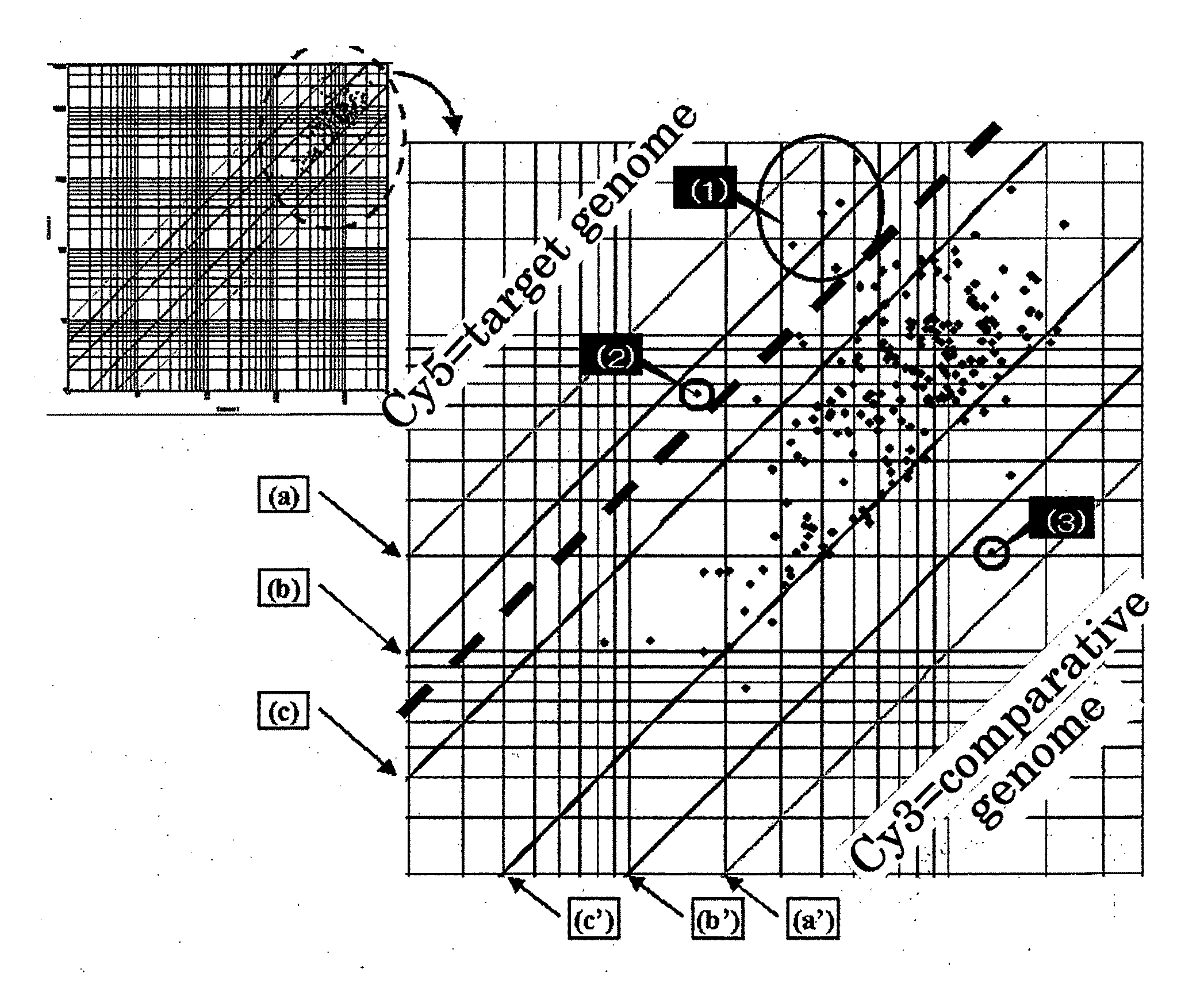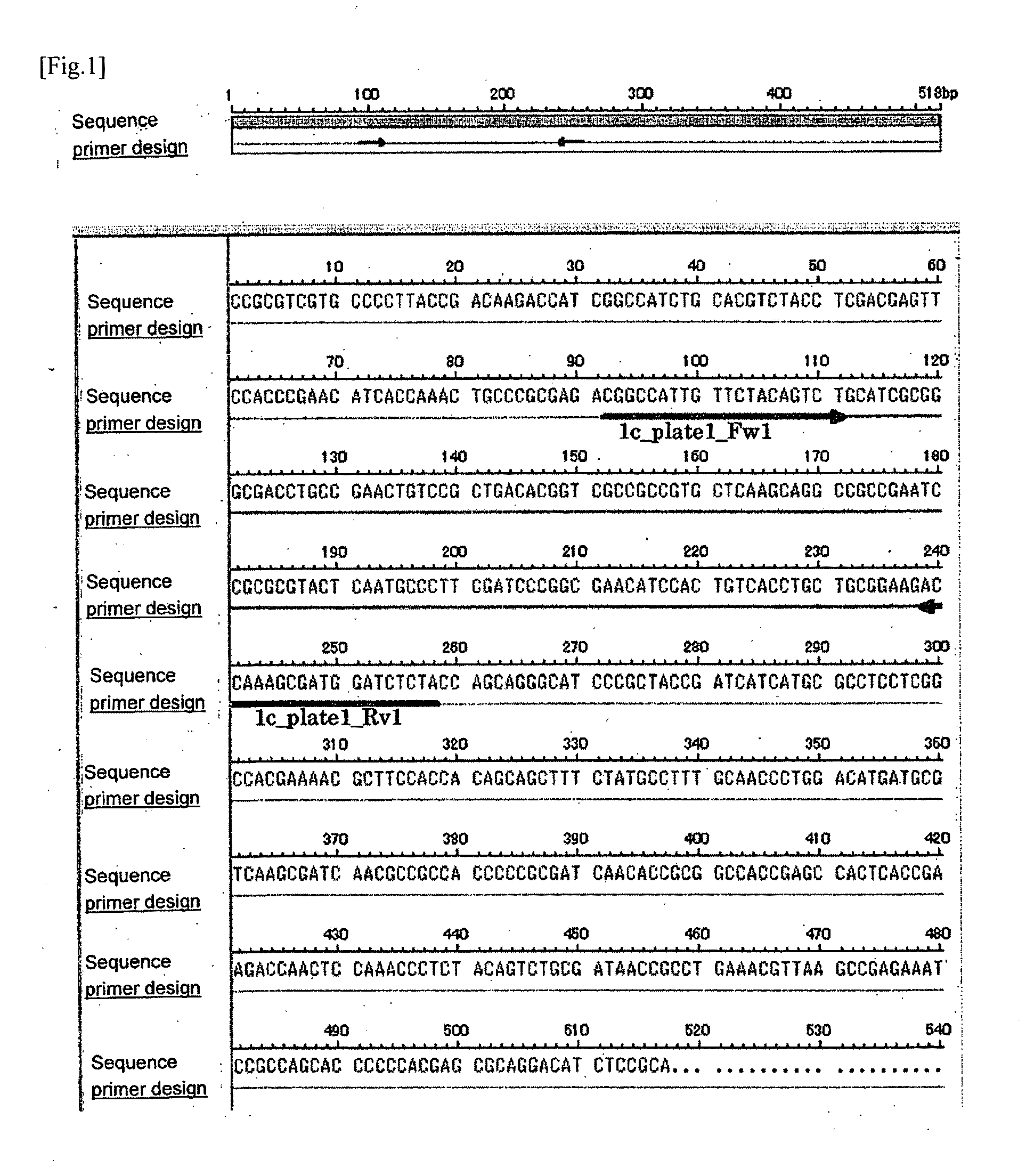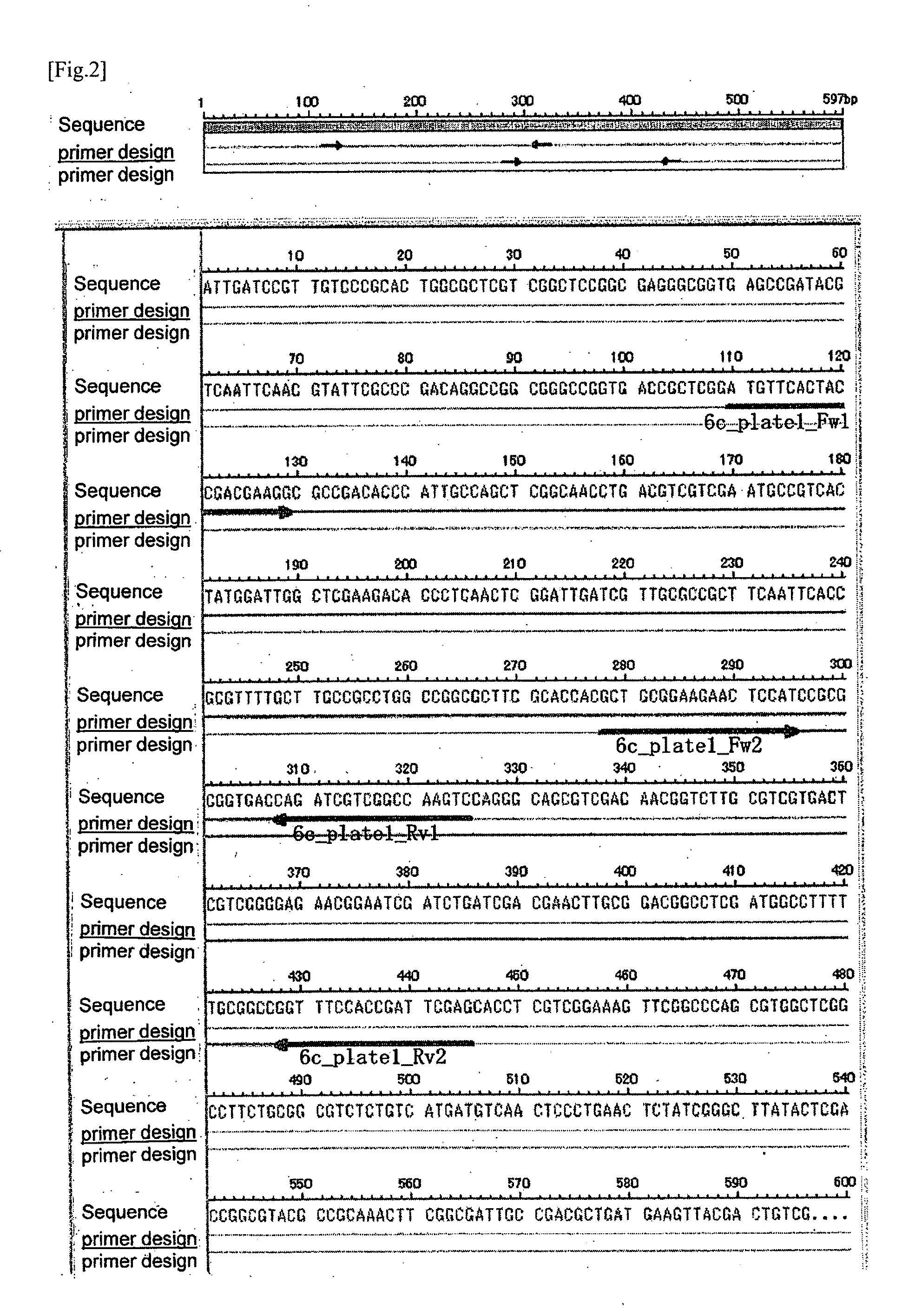Primer and Probe for Use in Detection of Mycobacterium Kansasii and Method for Detection of Mycobacterium Kansasii Using the Same
a technology of mycobacterium kansasii and probe, which is applied in the direction of liquid/fluent solid measurement, fluid pressure measurement, peptide, etc., can solve the problems of slow growth of bacterium belonging to the genus i>mycobacterium /i>, difficult to differentiate tuberculosis from nontuberculous mycobacterium disease, and difficult to detect and diagnose tuberculosis more quickly, high accuracy, high accuracy
- Summary
- Abstract
- Description
- Claims
- Application Information
AI Technical Summary
Benefits of technology
Problems solved by technology
Method used
Image
Examples
experimental example 1
Selection of Clone Derived from M. kansasii Genome
(1) Preparation of DNA Sample
[0259]Firstly, colonies of M. kansasii (Mycobacterium kansasii) cultured on the Ogawa's medium are collected and suspended in purified water and autoclaved (at 120° C. under 2 atmospheres for 20 minutes), and by way of disruption treatment (physical disruption using 2 mm diameter of glass beads) followed by centrifugation, the supernatant solution was obtained. From the supernatant solution obtained, extraction and purification of DNA was carried out using an ion-exchange resin type DNA extraction and purification kit, Genomic-tip (manufactured by QIAGEN GmbH), and obtained genomic DNA derived from M. kansasii.
[0260]The purified DNA obtained was adjusted to give final concentration of 400 ng / μl (in 10 mM Tris-HCl buffer, pH 8.9), and used as a DNA sample.
[0261]Separately, using a specific sequence of KATS2 for M. kansasii as described in JP-A-11-155589 and a specific sequence of M. tuberculosis (Mycobact...
example 1
Evaluation of the Specificity of the Candidate Clone for M. kansasii
[0311]The 8 candidate clones obtained in Experimental Example 1 were evaluated by performing agarose gel electrophoresis detection experiment in combination with the PCR amplification system for their availability for the M. kansasii specific detection system using nucleic acid amplification detection system.
(1) The Synthesis of the Primer for PCR
[0312]Firstly, based on the result of sequence analysis of the candidate clone 1, the primer sequence for the PCR amplification detection was designed using a web tool for primer design, Primer 3 (Whitehead Institute for Biomedical Research). Using the designed “CGGCCATTGTTCTACAGTCT” (SEQ ID NO: 5; hereinafter referred to as 1c_plate1_Fw1) and “TAGAGATCCATCGCTTTGGT” (SEQ ID NO: 6; hereinafter referred to as 1c_plate1_Rv1), the PCR was carried out as described below. The designed oligonucleotide was synthesized by the phosphoamidite method using the ABI 392 DNA synthesizer ...
example 2
Detection of M. kansasii Using the Primer of the Present Invention 1
[0326]As to the candidate clone 2 obtained in (6) of Experimental Example 1, based on the nucleotide sequence thereof, 6c_plate1_Fw1 (candidate sequence 13) as a forward primer and 6c_plate1_Rv1 (candidate sequence 14) as a reverse primer were designed and synthesized by the same method as described in (1) of Example 1. Using the same samples and reagents, and by the same method as described in (2) to (4) of Example 1, the PCR and the electrophoresis were carried out.
[0327]In addition, the nucleotide sequence of the candidate clone 2 obtained from the result of sequence analysis was the one depicted in SEQ ID NO: 2, and the location of each designed primer on the nucleotide sequence of the candidate clone 2 was as shown in FIG. 2.
[0328]By the PCR using forward primer 6c_plate1_Fw1 and reverse primer 6c_plate1_Rv1, DNA fragment with 216 base pair (SEQ ID NO: 57) in the candidate sequence 2 which is locating in the M....
PUM
| Property | Measurement | Unit |
|---|---|---|
| time | aaaaa | aaaaa |
| temperature | aaaaa | aaaaa |
| pH | aaaaa | aaaaa |
Abstract
Description
Claims
Application Information
 Login to View More
Login to View More - R&D
- Intellectual Property
- Life Sciences
- Materials
- Tech Scout
- Unparalleled Data Quality
- Higher Quality Content
- 60% Fewer Hallucinations
Browse by: Latest US Patents, China's latest patents, Technical Efficacy Thesaurus, Application Domain, Technology Topic, Popular Technical Reports.
© 2025 PatSnap. All rights reserved.Legal|Privacy policy|Modern Slavery Act Transparency Statement|Sitemap|About US| Contact US: help@patsnap.com



